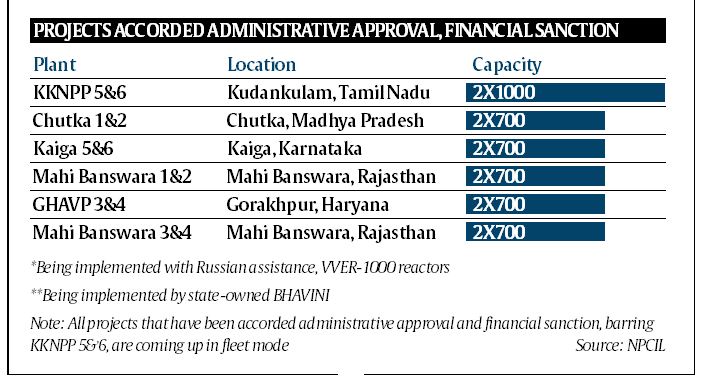Focus: GS-III Industry and Infrastructure, Science and Technology
Why in news?
The third unit of the Kakrapar Atomic Power Project (KAPP-3) in Gujarat achieved its ‘first criticality’ — a term that signifies the initiation of a controlled but sustained nuclear fission reaction.
Why is this achievement significant?
- This is a landmark event in India’s domestic civilian nuclear programme given that KAPP-3 is the country’s first 700 MWe (megawatt electric) unit, and the biggest indigenously developed variant of the Pressurised Heavy Water Reactor (PHWR).
- The PHWRs, which use natural uranium as fuel and heavy water as moderator, are the mainstay of India’s nuclear reactor fleet.
- Until now, the biggest reactor size of indigenous design was the 540 MWe PHWR, two of which have been deployed in Tarapur, Maharashtra.
- The operationalisation of India’s first 700MWe reactor marks a significant scale-up in technology, both in terms of optimisation of its PHWR design and an improvement in the economies of scale.
As India works to ramp up its existing nuclear power capacity of 6,780 MWe to 22,480 MWe by 2031, the 700MWe capacity would constitute the biggest component of the expansion plan.

What does achieving criticality mean?
- Reactors are the heart of an atomic power plant, where a controlled nuclear fission reaction takes place that produces heat, which is used to generate steam that then spins a turbine to create electricity.
- Fission is a process in which the nucleus of an atom splits into two or more smaller nuclei, and usually some byproduct particles.
- When the nucleus splits, the kinetic energy of the fission fragments is transferred to other atoms in the fuel as heat energy, which is eventually used to produce steam to drive the turbines.
- For every fission event, if at least one of the emitted neutrons on average causes another fission, a self-sustaining chain reaction will take place.
- A nuclear reactor achieves criticality when each fission event releases a sufficient number of neutrons to sustain an ongoing series of reactions.
History of PHWR in India
- PHWR technology started in India in the late 1960s with the construction of the first 220 MWe reactor, Rajasthan Atomic Power Station, RAPS-1 with a design similar to that of the Douglas Point reactor in Canada, under the joint Indo-Canadian nuclear co-operation.
- Canada supplied all the main equipment for this first unit, while India retained responsibility for construction, installation, and commissioning.
Click Here to read more about Nuclear reactors in India
-Source: Indian Express



